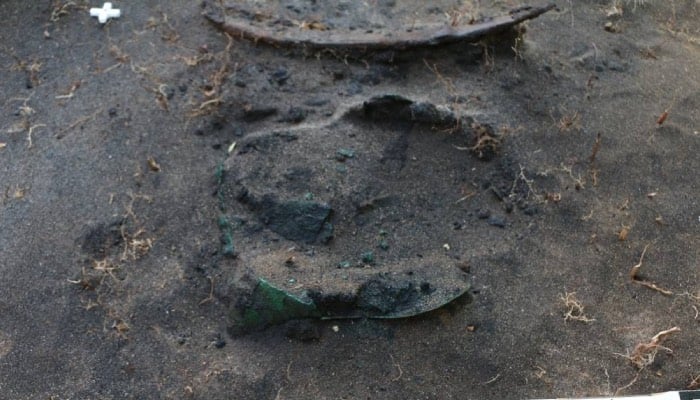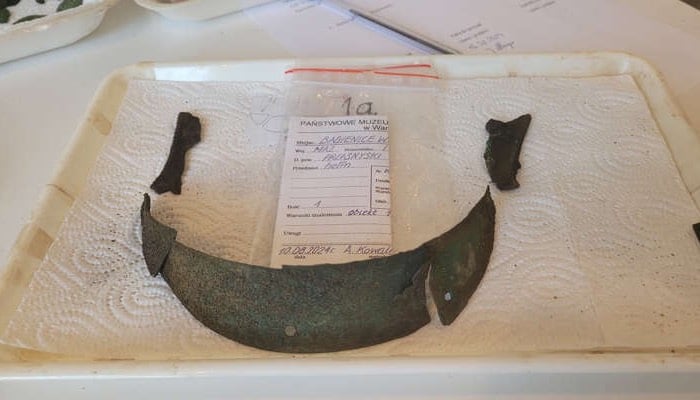
Archaeologists in Poland have find a 2,300-year-old bronze helmet and other artifacts, marking the first evidence of Celtic settlement in northern Poland.
Led by Bartłomiej Kaczyński from the State Archaeological Museum in Warsaw, this find suggests that Celts were in the region to control the amber trade.
While, Celts were previously known to have settled in southern Poland around 400 B.C., evidence of their presence in the north was limited until now.

The helmet, made of thin bronze and styled in the Celtic "Berru" fashion with a conical top and distinctive nape, was found at the Łysa Góra site near Chorzele, approximately 105 kilometers north of Warsaw.
This site is the most northeastern location in Europe where Celts have been recorded.
Along with the helmet, over 300 artifacts were discovered, including four iron axes and an iron sword.
These finds suggest that the Celts may have introduced ironworking to the area.
The team also uncovered Celtic ornaments, brooches, and tools such as iron chisels, scythes, and scissors, which were not previously known in Poland.
The discoveries indicate that the Łysa Góra site was an important trading hub on the "amber trail" from the Baltic Sea coast.
Amber was highly valued in the Mediterranean world and crucial for the Celts.















